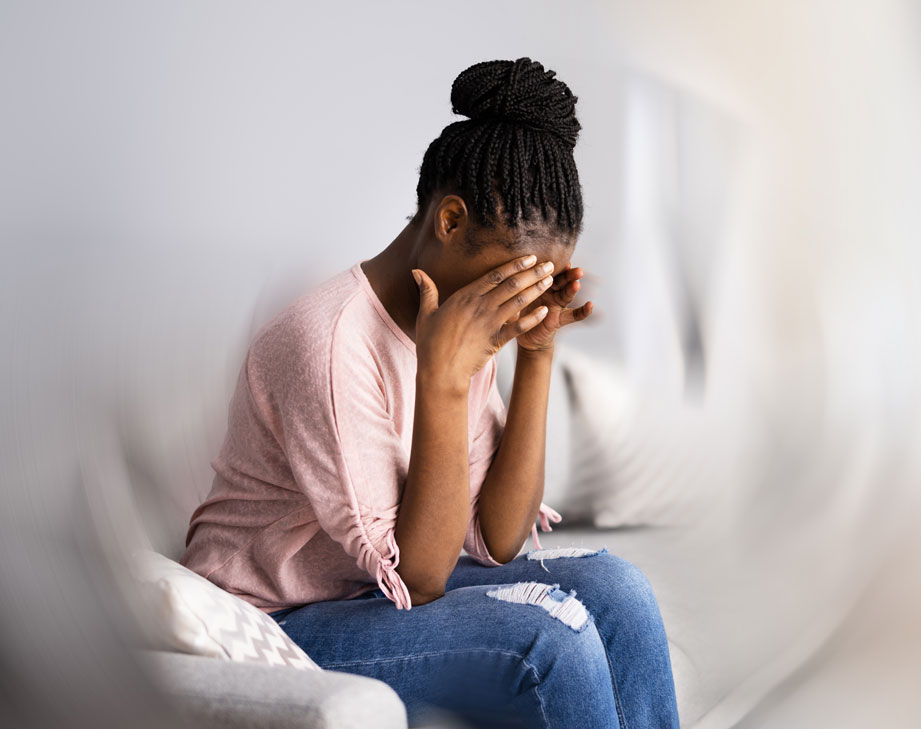

Migraine | Insight
Introduction
Migraine is a very common health condition, which affects around one-in-five women and one-in-15 men.
It usually manifests as a moderate or severe throbbing headache, but a variety of other symptoms may occur during the migraine episode.
The exact cause of the condition is still unknown, however, migraines are thought to be related to temporary changes in brain chemicals, nerves and blood vessels.
Migraine / chronic headache has been found to be the second-most frequently identified cause of short-term absence (47%) for non-manual employees.
Key takeaways
- Migraines usually begin in early adulthood
- Some sufferers experience migraines very frequently (up to a few times a week), while others only get them occasionally - and it can be possible for years to pass between migraines
- Some sufferers experience warning symptoms (a sensory “aura”) such as flashing lights before the headache begins
- There is no cure, but avoiding known triggers - along with medical management, including painkillers / preventative medication - are effective for many people
- Lying down in the dark helps many sufferers reduce symptoms
- The outlook for migraines is very variable, but they generally improve with age
- The impact of migraine on work can vary considerably, depending on the severity of the condition - and could impact on attendance at work (during the migraine episode and recovery time) or on performance (e.g. reduced productivity)
- Each case should be assessed on its individual merits, and occupational health can offer bespoke advice
- If migraines are frequent and severe, the condition may be classed as a disability under the Equality Act - and the employer must provide reasonable adjustments to support the employee at work
Symptoms and diagnosis
In some cases, changes in mood, energy, behaviour and appetite can occur several hours or days before a migraine episode.
Some individuals experience temporary warning symptoms (called an “aura”) before the migraine episode begins. These symptoms generally develop gradually over a few minutes and may last up to an hour. The aura symptoms might include seeing flashing lights, zig-zags or blind spots; numbness / tingling in the arms or face; dizziness and difficulty speaking.
Typical symptoms of the migraine episode itself include headache, feeling or being sick, and extreme sensitivity to bright light, loud sounds or smells. Less commonly, people may experience a variety of other associated symptoms, for example, sweating and feeling very hot or cold, difficulty concentrating, tummy pain and diarrhoea.
Some people have “silent migraines” where they experience an aura or other migraine symptoms but no headache.
Migraine episodes typically last between around four and 72 hours, with the symptoms gradually settling. Individuals may feel tired for a few days afterwards.
There may be an additional “prodromal” stage which occurs before the aura and brings changes in mood, energy and appetite. This can happen several hours or days before the migraine proper.
Potential triggers vary between individuals, but might include certain foods and drinks, missed meals, dehydration, hormonal changes, poor posture, neck / shoulder tension, stress, tiredness or poor sleep, and bright or flickering lights. Keeping a migraine diary may help to identify triggers.
There are no medical tests specifically for migraine, with diagnosis based on the pattern of symptoms. However, tests may sometimes be carried out to exclude other conditions. The GP may consider referral to a neurologist if there is uncertainty about the diagnosis, if the symptoms are particularly frequent or severe, or if treatment is not effective.
Treatment and recovery
Although there is currently no cure for migraines, there are a number of treatments and other measures which can help the symptoms.
Most sufferers find that sleeping or lying down in a dark room is the best immediate option, while others find eating can help. Some people feel better after being sick.
Over-the-counter painkillers such as paracetamol or ibuprofen can be effective - and are best taken as soon as possible after symptoms begin. However individuals should check first with their GP / pharmacist that these particular medications are appropriate and safe for them, and how often to take them.
If these are insufficient, a GP may prescribe medications called triptans in addition to painkillers. These work by reversing the temporary widening of brain blood vessels thought to lead to a migraine developing.
Anti-sickness medication can also be prescribed, and combination medicines which include painkilling and anti-sickness components are available from pharmacies.
Sometimes a course of acupuncture can be effective. Sufferers are encouraged to become familiar with the triggers for their attacks, so they can be identified, managed and - if possible - avoided.
There are also several medicines and interventions which can play a preventative role, and which are usually suggested for more severe cases. It is advisable to discuss the diagnosis and the treatment / prevention options with a GP.
Supporting your employees at work
As with many conditions, simple strategies can make a big difference to employees with migraine - and to their employers in terms of optimising staff productivity. Work adjustments should be tailored to the individual, and can be considered under the following headings:
Physical work environment
- Carry out a workstation assessment to ensure good posture and to avoid / minimise glare or reflections from light sources (including office lighting and windows) – e.g. adjusting screen contrast, using anti-glare screen filters and installing window blinds may be helpful
- Avoid any other relevant physical triggers, such as loud noise
Health and safety information and awareness
Information and training can promote awareness of the physical impact of the use of IT equipment - and can enable workers to manage the impact on their health, including migraine.
Working practices
- Flexible working hours may help to avoid sick leave and reduce stress (e.g. worrying about being late for work) and some flexibility in location (such as homeworking) may also help the employee better manage their symptoms.
- Flexible breaks: breaks give an employee the time to stretch, relax muscles and manage trigger factors such as dehydration. They are particularly beneficial if an employee is working at a computer or managing machinery.
- Rotation of tasks: by being able to share or rotate tasks within a team, an employee may still be able to work - while avoiding prolonged activities which trigger their migraine.
- Rest: if space allows, having access to a quiet room can help an employee to rest at the onset of an attack, which may enable them to recover quicker.
- Facilitate attendance at any health-related appointments.
- Redeployment: moving to a different site or team, a reduction of hours or a new role entirely may help an employee in the workplace to manage their migraine.
Sickness absence
For employees with migraine-related absences, you may wish to consider adjusting trigger points in accordance with your organisation’s policies.
Stress management
Explore with the employee whether there are any significant work-related stressors and aim to avoid or minimise these. A stress risk assessment is often a useful framework on which to base such discussions.
Further information on how to carry out a stress risk assessment is available on the Health and Safety Executive’s website.



